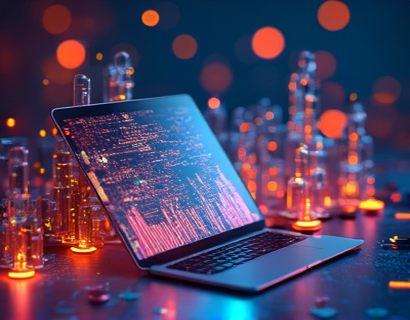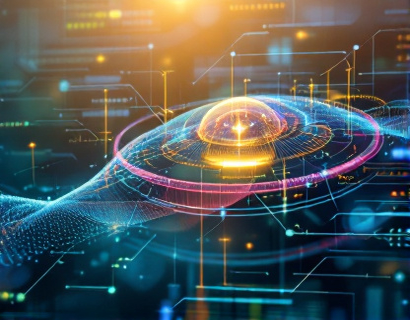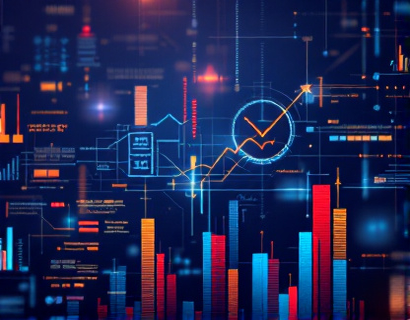Elevating Digital Experiences: The Synergy of AI and Crypto
The intersection of artificial intelligence and cryptocurrency is giving rise to transformative digital experiences that are redefining how users interact with technology. This fusion is not just about combining two advanced fields but creating a synergy that enhances app interactions, user engagement, and overall digital experiences. As we delve into this topic, we will explore the innovative solutions that are emerging from this convergence, focusing on how they are reshaping the crypto and technology landscape.
The Role of Artificial Intelligence in Crypto
Artificial intelligence plays a pivotal role in the cryptocurrency ecosystem by providing advanced tools for security, trading, and user experience. One of the primary applications of AI in crypto is in security measures. Machine learning algorithms can detect and prevent fraudulent activities by analyzing patterns and anomalies in transaction data. This proactive approach to security is crucial in a space where the risk of cyber threats is ever-present.
Beyond security, AI is revolutionizing trading strategies. Algorithmic trading powered by AI can process vast amounts of data in real-time, identifying trends and making predictions with a level of precision that surpasses human capabilities. These AI-driven trading bots can execute trades at optimal times, maximizing returns and minimizing risks. For traders, this means access to sophisticated tools that can give them a competitive edge in the market.
Enhancing User Experience through AI
The user experience in the crypto space is significantly improved through the integration of AI. User interfaces can be personalized based on individual preferences and behavior, creating a more intuitive and seamless interaction. For instance, chatbots powered by natural language processing (NLP) can provide instant customer support, answering queries and guiding users through complex processes with ease. This not only enhances user satisfaction but also reduces the workload on human support teams.
Moreover, AI can analyze user data to offer tailored recommendations. Whether it's suggesting new cryptocurrencies to invest in, highlighting relevant news articles, or recommending wallet features, AI-driven personalization ensures that users receive information and services that are most relevant to their needs. This level of customization fosters a deeper connection between users and crypto platforms, encouraging longer engagement and loyalty.
Decentralized Applications and AI
Decentralized applications (dApps) are at the forefront of the crypto revolution, and AI is playing a crucial role in their development and functionality. dApps leverage blockchain technology to provide decentralized services, and AI enhances these services by adding intelligent features. For example, AI can be used to optimize smart contracts, ensuring they execute efficiently and securely. This reduces the risk of errors and enhances the overall reliability of dApps.
AI also contributes to the governance of decentralized platforms. Through predictive analytics, AI can forecast user behavior and network usage, helping developers make informed decisions about upgrades and feature additions. This data-driven approach to governance ensures that dApps evolve in a way that best serves their user base.
Cryptocurrency and AI in Financial Inclusion
One of the most promising aspects of the AI and crypto synergy is its potential to drive financial inclusion. Traditional banking systems often exclude large segments of the population, particularly in underdeveloped regions. Cryptocurrency, combined with AI, can provide financial services to these underserved communities. AI-powered identity verification systems can authenticate users without the need for traditional ID documents, making it easier for people to access crypto services.
Furthermore, AI-driven financial advisory tools can offer personalized investment advice and budgeting solutions to individuals who may not have access to traditional financial services. These tools can help users make informed decisions, manage their finances more effectively, and even invest in cryptocurrencies, thereby opening up new economic opportunities.
Cross-Chain Interoperability and AI
Cross-chain interoperability is a critical challenge in the crypto ecosystem, as it enables different blockchain networks to communicate and transfer assets seamlessly. AI is instrumental in solving this challenge by developing sophisticated protocols and algorithms that facilitate interoperability. Machine learning models can analyze blockchain data to identify compatibility issues and propose solutions that ensure smooth asset transfer across chains.
This interoperability not only enhances the functionality of individual blockchains but also creates a more unified and efficient crypto market. Users can benefit from a more diverse range of services and assets, while developers can build more robust and versatile applications. AI's role in achieving this level of integration is invaluable, paving the way for a more connected and dynamic crypto landscape.
AI in Crypto Art and NFTs
The world of crypto art and non-fungible tokens (NFTs) is another area where AI is making a significant impact. AI-generated art has gained popularity, with algorithms creating unique and often stunning pieces that are sold as NFTs. These AI artworks not only push the boundaries of creativity but also introduce new revenue streams for artists and collectors alike.
AI can also enhance the NFT market by providing tools for authentication and provenance verification. Blockchain technology ensures the uniqueness and ownership of NFTs, but AI can further secure this process by analyzing metadata and detecting any anomalies. This combination of AI and blockchain ensures that NFTs are genuine and their history is transparent, adding value to the digital art market.
Challenges and Considerations
While the integration of AI and crypto offers numerous benefits, it also comes with challenges that need to be addressed. One of the primary concerns is the regulatory landscape. As AI and crypto continue to evolve, regulators are grappling with how to oversee these technologies to prevent misuse and ensure consumer protection. Staying compliant with regulations while innovating is a delicate balance that both developers and users must navigate.
Another challenge is the computational resources required for AI and blockchain technologies. Training AI models and maintaining blockchain networks demand significant computational power, which can lead to high energy consumption. The crypto community is increasingly focusing on developing more energy-efficient solutions, such as proof-of-stake consensus mechanisms, to mitigate this issue.
Future Prospects: AI and Crypto Convergence
The future of AI and crypto integration holds immense potential. As technology advances, we can expect even more sophisticated applications that further enhance digital experiences. For instance, the development of AI-driven virtual assistants specifically designed for the crypto space could provide users with real-time market insights, automated trading assistance, and comprehensive portfolio management.
Additionally, the rise of Web3, which aims to create a decentralized internet powered by blockchain, will benefit greatly from AI innovations. AI can help build more secure, user-friendly, and efficient Web3 applications, fostering a more inclusive and accessible digital ecosystem. The synergy between AI and crypto is set to drive the next wave of technological advancements, redefining how we interact with the digital world.
In conclusion, the fusion of AI and cryptocurrency is not just a technological trend but a transformative force that is reshaping the digital landscape. By leveraging the strengths of both fields, we can create more secure, efficient, and user-friendly applications that enhance the overall digital experience. As this synergy continues to evolve, it will open up new possibilities and opportunities, paving the way for a more connected and intelligent future.











































